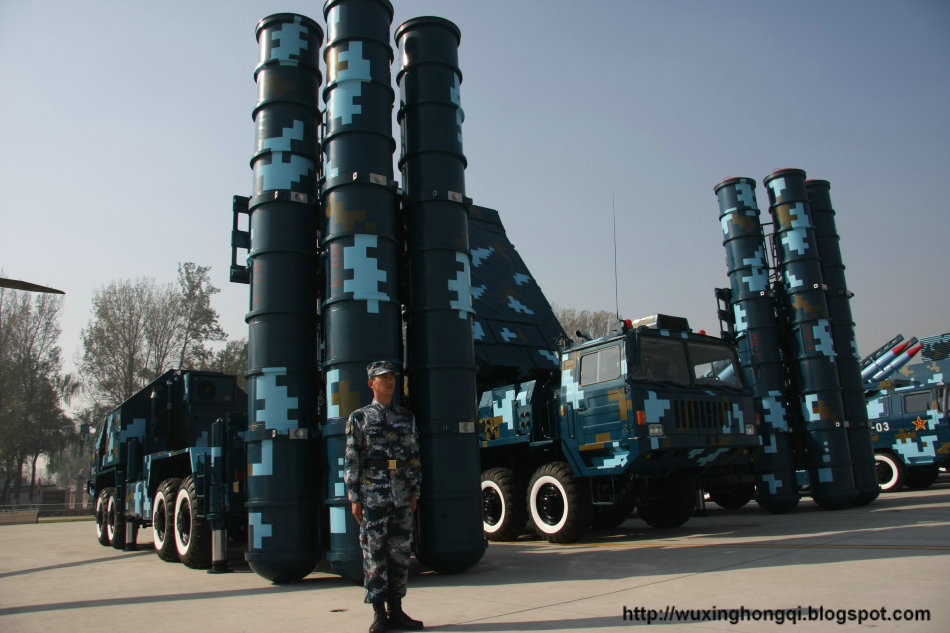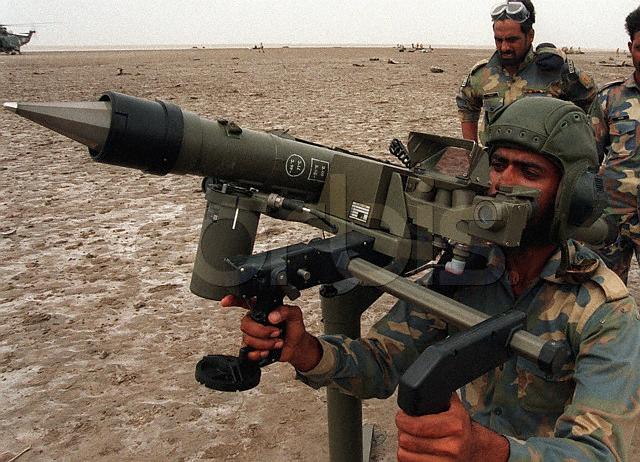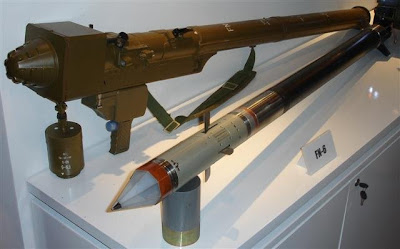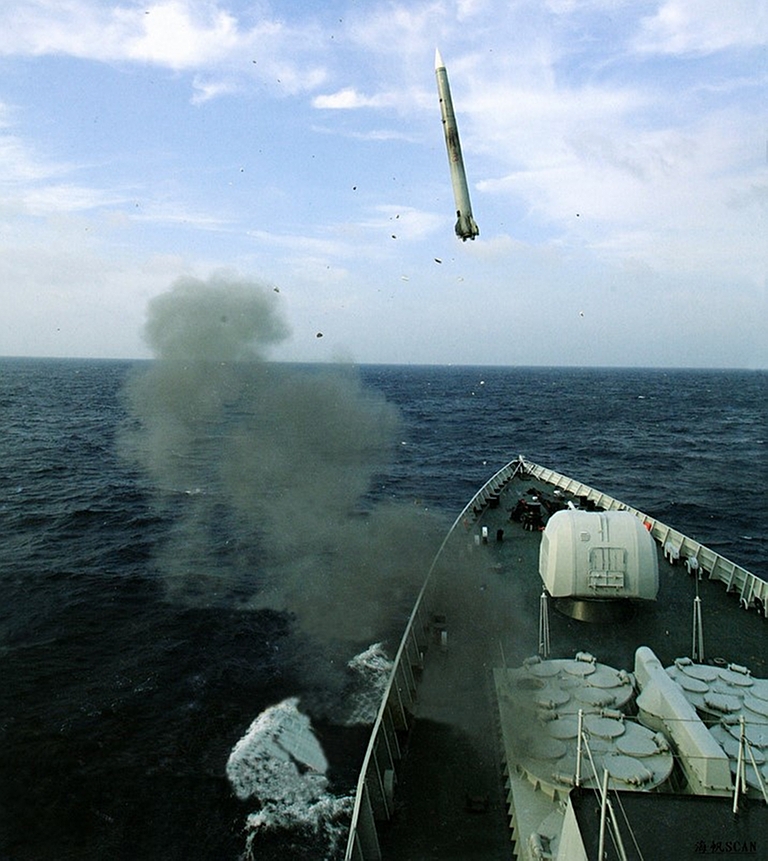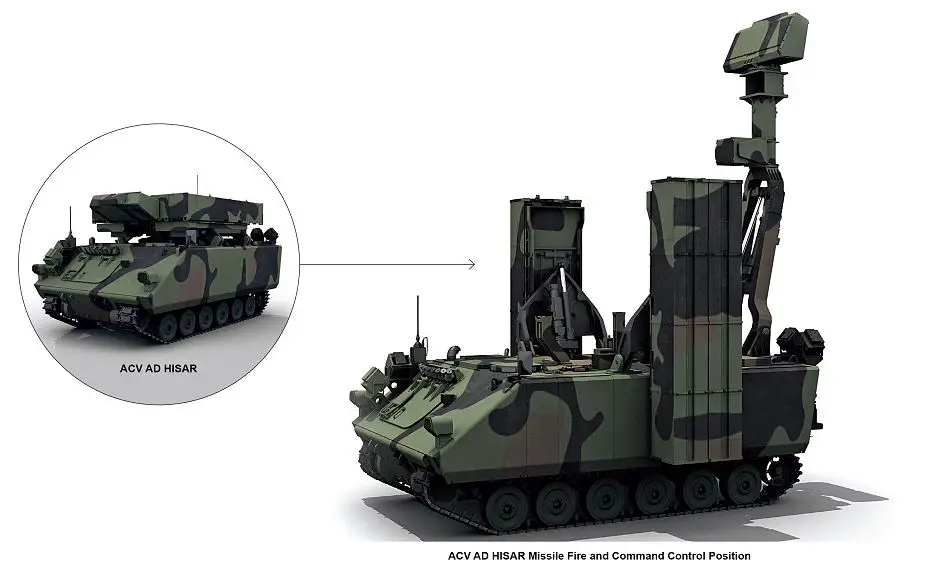CPMIEC HQ-9 / HHQ-9 / FD-2000 / FT-2000
Self Propelled Air Defence System
Technical Report APA-TR-2009-1103
Introduction
The FD-2000/HQ-9 was developed to provide a long range SAM capability, distinct from the medium range capabilities of the HQ-12/KS-1 series. The FT-2000 is a derivative which is fitted with an anti-radiation seeker and intended for engagements against AEW&C/AWACS and stand-off jamming aircraft.
The PLA have not been overly generous in disclosing details of this design. There is general agreement in open sources that the HQ-9 uses Russian S-300PMU technology extensively, including the cold launch design for vertical ejection from launcher tubes on TELs, 5V55/48N6 rocket motor technology, and a range of other S-300PMU components, including an 8 x 8 four tube TEL modelled on the 5P85SU/DU series. Some sources claim the weapon uses a two stage arrangement akin to the S-300V, but more recent imagery shows this is not correct. Slant range performance figures also vary across sources, between 50 and 100 nautical miles. What data is available suggests a missile which is similar in capability to early variants of the MIM-104 Patriot and SA-10C/SA-20A 48N6E, including Track via Missile (TVM) guidance.
The HQ-9 is supported by the
HT-233 phased array engagement radar, like the H-200 modelled on the MPQ-53 and 30N6E designs, carried on a Taian TAS5501 series 10 x 10 high mobility vehicle, common to the HQ-9 TEL and similar in design to the S-400's BAZ-6900 series vehicle. Chinese sources claim C-band operation with 300 MHz receiver/antenna bandwidth, detection and tracking range of 150/100 km, and monopulse angle tracking to resist jamming. The design bears considerable similarity to the
30N6E series, especially in the antenna design.
Recently disclosed imagery shows the use of the self-propelled
Type 305A, Type 305B and Type 120 radars as the battery acquisition radar component. The designation FD-2000 is for export configurations of the HQ-9.
Recent reports claim the missile combines midcourse inertial / datalink and terminal active radar homing guidance [
refer below].
Cited battery composition is one variant of the YLC-2V acquisition radar, one HT-233 engagement radar, 8 x Taian TAS-5380 TELs, with 32 ready rounds, one vehicle for battery positioning, one generator vehicle, one support vehicle and a mobile command post. A HQ-9 brigade level formation comprises six batteries.
Recently the PLA disclosed the existence of two additional radars associated with the HQ-9 system. These are the Type 305A, modelled on the Thales GM400 AESA, and the Type 120 low altitude acquisition radar, which is similar in configuration to the earlier
JY-29,
JY-11B and
YLC-18, but operating at a lower frequency to the latter. These radars perform analogous functions to the 64N6E Big Bird and 76N6 Clam Shell in the SA-20 battery, respectively. The Type 305B / YLC-2V series radar performs analogous functions to the ST-68U Tin Shield in early SA-20 variants, and 96L6 in the SA-20B and SA-21.
The HHQ-9 is the navalised variant of the HQ-9, launched from a VLS system, on the Type 052C Luyang II class DDG.
According the US DoD, the FT-2000 has yet to be deployed, as is the case with the follow-on HQ-9 variants. Open sources describe the FT2000 as an inertially guided SAM with an anti-radiation terminal seeker, programmed before launch for the characteristics of the intended target. Cited frequency coverage is 2-18 GHz. Each battery includes four unspecified ESM vehicles, used to generate targeting data for the missile battery. Intended targets including support jamming aircraft, aircraft equipped with self-protection jammers, and other radiating airborne targets, e.g. AWACS/AEW&C. The type of passive targeting system has not been disclosed, but variants of the CETC
YLC-20 presented then as the most likely candidate. The more recent DWL002 is much better suited.
CETC DWL002 Passive Detection System fully deployed (CETC image).
To date there has been no evidence displayed of integration between the HQ-9 battery components and the new
CETC DWL002 Passive Detection System, which has been engineered from the outset with a heightfinding capability to support SAM battery engagement radar cueing and possibly missile midcourse guidance. The high production expense of duplicating antenna and receiver chains to provide a genuine 3D capability as done in the DWL002 design would not be incurred if its role was confined to simple area surveillance, as is the case with its 2D only Warsaw Pact developed predecessors. Co-deployment of the DWL002 with HQ-9 battery acquisition radars is thus a very likely near future development. The system would be compatible with the TVM (SAGG) guidance of standard HQ-9/FD-2000 rounds as well as the FT-2000 anti-radiation round.
Given that the FT-2000 is derived from the HQ-9, claims that this weapon has not been deployed should be treated with caution, since the missile and its guidance support package could have been integrated into the baseline HQ-9 system design, and other than by covert intelligence gathering or PLA disclosure, this cannot be easily determined by simple observation. It is entirely conceivable that a HQ-9 battery could be armed with a mix of HQ-9 /FD-2000 and FT-2000 rounds, and this could only be determined in combat once missiles are actually launched and enter their terminal guidance phase.
Technical Analysis
The HQ-9 family of missiles are clearly derived from the Russian S-300PMU / SA-10C Grumble and S-300PMU1 / SA-20A Gargoyle family of SAMs, but with numerous unique design changes. Cited kinematic performance typically falls in between the SA-10C and SA-20A, making the HQ-9 systems credible equivalents to various MIM-104 Patriot variants.
Like its Russian ancestors, the HQ-9 is designed from the outset for “hide, shoot and scoot” operations, with high mobility vehicles employed for all critical battery components.
In operational planning terms, the HQ-9 should be treated as equivalent to early model SA-20 variants, with the caveat that the different acquisition radar package will impose unique planning requirements, especially in terms of EWSP and SOJ requirements. The possibility of FT-2000 antiradiation rounds being mixed into HQ-9/FD-2000 TEL payloads presents a series of operational risks all of its own.
The high mobility of the HQ-9 family of weapons will present similar SEAD/DEAD challenges as seen with late model SA-10, SA-20 and SA-21 variants, especially if a disciplined “hide, shoot and scoot” doctrine is followed by HQ-9 operators.
Chinese sources claim that the HQ-9 family of systems employ much newer computing technology than imported Russian S-300PMU/PMU1/PMU2 systems. This suggests a equal or superior computing capability for signal processing, data processing and guidance support.
The HQ-9 family of systems should not be underestimated - they will be credible equivalents to the SA-20 family of systems.
HQ-9/HHQ-9/FD-2000 and FT-2000 Missile Design
HHQ-9 launch at motor ignition (via Chinese Internet).
The basic airframe configuration and internal layout of the HQ-9/HHQ-9/FD-2000 round appear identical to the Russian Almaz-Antey/Fakel 5V55/48N6 family of SAMs. The only notable difference is the redesign of the TVC vanes, which are situated aft of the nozzle in the Chinese missile.
The FT-2000 airframe appears to be a direct derivative of the HQ-9/HHQ-9/FD-2000 design, but with additional cruciform strakes, likely intended to improve endgame turning performance, and possibly improve post-burnout glide range. Chinese marketing material indicates the airframe is one metre shorter than the Russian 5V55/48N6.
No details have been disclosed on the seeker employed. Given the design heritage of the missile, the baseline seeker is likely to be a direct derivative of earlier variants of the 48N6E/E1 seeker, employing TVM (SAGG) guidance, and midcourse datalink corrected inertial guidance.
Claims have also emerged of an active radar seeker, but these should be treated with caution as Chinese industry has little experience with such, licencing the Russian Agat 9B-1103M design for the PL-12 AAM. However, in the long term it is likely that an active seeker will find its way into the missile, as this is a strong trend in contemporary long range SAM design.
There are also claims of an alternate HQ-9B configuration, employing a dual mode semi-active radar homing and scanning infrared seeker, claimed by Janes to be an imaging IR seeker1. The latter would not present unusual difficulties as China has designed a range of scanning IR seekers for air to air missiles.
The seeker for the FT-2000 variant is described as a wideband design, covering 2 - 18 GHz. To date only one very poor quality image has emerged, suggesting an unusual planar array design antenna. The low visibility of the FT-2000 as a unique product in recent marketing literature could indicate that the seeker was integrated into a standard FD-2000 airframe, merging the two designs. A single airframe with alternate HQ-9/9A TVM (SAGG), HQ-9B dual-mode and FT-2000 anti-radiation seekers would be operationally more flexible and cheaper than unique designs, and would permit mixed type salvo launches to complicate defensive options. The addition of a fourth active radar seeker type would increase the potency of the mix. The Russians have employed this strategy in several air-air missile designs. Until disclosures are made the PLA or manufacturer, the strategy in seeker deployment is unlikely to be fully understood.
The promixity fuse and warhead design have not been disclosed. They are likely to be based upon the 5V55/48N6 series.
Cited kinematic performance suggests the solid propellant motor is based on early 48N6 technology.
The FD-2000/HQ-9 round resembles the Soviet 5V55 series, with the exception of prominent external TVC vanes (via Chinese Internet).
Cutaway of the FT-2000 round from brochure material. Note the additional cruciform strake absent in the 5V55/48N6 family of missile airframes, and the baseline HQ-9 (via R.D. Fisher).
Production and Exports
The HQ-9 has been in production for PLA-AF and PLA-N deployment for a number of years. The US DoD puts current deployments at 64 launchers, making for 8 to 16 batteries.
Since late 2008 the HQ-9 has been offered for export under the designation FD-2000. The anti-radiation FT-2000 was offered for export a decade ago.
To date there have been claims that Pakistan is procuring a number of systems, but details remain to be confirmed. Iran is also a possible future client, following the difficulties they have experienced in procuring the S-300PMU1 / SA-20 Gargoyle from Russia - there have been numerous speculative claims of an acquisition but no evidence to support them.
Given China's active marketing effort in Latin America, South Asia and most recently, Africa, it is likely that HQ-9 derivatives will be widely exported, as more affordable analogues to the Russian S-300PMU2 / SA-20B and S-400 / SA-21.
HQ-9/FD-2000/FT-2000 Technical Data
FD-2000 / HQ-9 SAM Characteristics2
Operational Range (Aircraft Target) 7 - 125 km
Operational Altitude (Aircraft Target) 25 m - 27 km
Operational Range (Cruise Missile Target) 7 - 15 km
Operational Altitude (Cruise Missile Target) >25 m
Operational Range (Ballistic Missile Target) 7 - 25 km
Operational Altitude (Ballistic Missile Target) 2 - 15 km
Operational Range (Supersonic Missile Target) 7 - 50 km
Operational Altitude (Supersonic Missile Target) 1 - 18 km
FT-2000 Anti-Radiation SAM Characteristics (CNPMIEC)
Operational Range 12 - 100 km
Operational Altitude 3 - 20 km
Missile Weight 1,300 kg
Missile Length 6.8 m
Missile Diameter 0.446 m
Seeker Band Coverage 2 to 18 GHz
HQ-9/FD-2000 Battery Components
HQ-9/FD-2000 Battery Components
System Function/Composition Vehicle
TWS-312 Self Propelled Command Post -
- Site Survey Vehicle EQ-2050 HMMWV
HT-233 Self Propelled Engagement Radar TAS-5380
Type 305B/YLC-2V Self Propelled Acquisition Radar ND1260
- Self Propelled Transporter Erector Launcher TAS-5380
- Transporter / Transloader / Crane Four Launch Tubes TAS-5380
- Mobile Diesel Power Generator 200 kW -
- Mobile Mains Grid Power Converter -
HQ-9/FD-2000 Battery Component Options
Type 305A Mobile Acquisition Radar ND1260
Type 120 Semi-Mobile Low Altitude Acquisition Radar ND1260
HQ-9/FD-2000 TAS5380 Self Propelled Transporter Erector Launcher
HQ-9 TEL using the Taian TAS-5380 chassis. Additional image [
1] (via Chinese Internet).
HQ-9 TELs on parade in 2009 (via Chinese Internet).
HQ-9/FD-2000 TAS5380 Self Propelled TEL Details
FT-2000 TAS5380 Self Propelled Transporter Erector Launcher
FT-2000 TEL on a variant of the 8 x 8 Taian TAS-5380 chassis. Note the telescoping datalink antenna, absent on the HQ-9 TEL design. The hydraulic elevating launcher structural frame appears identical to the HQ-9 TEL design (CPMIEC brochure image).
TWS-312 Battery Command Post
HT-233 Engagement Radar
Production HT-233 PESA engagement radar on the 10 x 10 Taian TAS5501 series chassis (© 2009, Bradley Huang).
Type 305A Acquisition Radar
Type 305A acquisition radar deployed, in the background to the right for comparison the Type 305B, based on the YLC-2V. The van parked behind the Type 305A radar head vehicle contains the operator stations. All are carried by North-Benz ND-1260 series trucks, a licenced Mercedes-Benz NG80 (© 2009, Bradley Huang).
Type 305B/YLC-2V Acquisition Radar
Type 305B acquisition radars with antenna deployed (via Chinese Internet).
Type 120 Low Altitude Acquisition Radar
Aft view of Type 120 fully deployed (via Chinese Internet).
Dong Feng EQ-2050 HMMWV HQ-9 Battery Scout Vehicle
The Dong Feng EQ-2050 HMMWV is employed frequently as the battery scout vehicle.
HQ-9 TAS5380 Missile Transloader
At least two vehicle types exist for the transportation of HQ-9 reloads. Above is an 8 x 8 TAS5380 series high mobility transloader/transporter, clearly derived from the HQ-9 TEL (via Chinese Internet).
HQ-9 Missile Transporter
A 6 x 6 HQ-9 transporter vehicle, the vehicle is likely to be a North-Benz ND1260 series (via Chinese Interne
HHQ-9 Missile - Type 052B/C DDG
HHQ-9 launch at motor ignition. The missile airframe closely resembles the 5V55/48N6 series (via Chinese Internet).
HHQ-9 launch, the weapon employs much the same cold launch technology as the Russian S-300P series it was modelled upon (via Chinese Internet).
HHQ-9 rounds on parade. The prominent external TVC vanes are very visible on these examples (via Chinese Internet).
CPMIEC HQ-9 / HHQ-9 / FD-2000 / FT-2000 Self Propelled AirDefence System























